DESIGN: GLASS WORK-
* Gorilla Glass 5 on both sides
* Body colored frame
* Protective case in the box
Besides the high-definition camera and the new processor, the main thing before buying the Xiaomi Redmi Note 7 Pro is glass. This is the first time Xiaomi has used a glass construction in its Redmi Note smartphone and has received promising results. On the one hand, Xiaomi claims that it is possible to break the nut through the back of the phone without breaking the glass shell. No one wants to do this with a mobile phone, but the fact is that it is durable even with glass on both sides of the phone and won't open if dropped.
There is Gorilla Glass 5 on both sides. It certainly won't break even when it gets close to the ad pocket, but there are a lot of scratches on the key pocket. It is recommended that you put your phone in your bag as soon as you open it. However, the Redmi Note 7 Pro looks a lot better than other previous Redmi Note phones.
Having said that, the Redmi Note 7 Pro looks much more premium than any other Redmi Note phone before. Xiaomi experimented with gradient colours for the first time and came out with two variants — Nebula Red and Neptune Blue. Both variants change colour when light reflects on it, similar to the design you will often find in Honor and Huawei smartphones. There’s also the Space Black variant for the conservative buyer, which we received for review.
The Space Black version leaves a lot of fingerprints and we still have to use a microfiber cloth to protect our body from stains. In addition, the camera is subjected to strong shocks, causing the phone to come off the surface. The shock head of the camera also attracts a lot of dust, so this is inevitable even in the case. The back is minimized, the Redmi logo at the bottom, the camera module at the top left is vertical, and the fingerprint sensor is in the center at the top for easy access.
The front of the Redmi Note 7 Pro is almost full screen. It has a small U-shaped notch called Redmi Dot Notch and a front-facing camera. This is a welcome upgrade from the ugly rectangular notch included in the Redmi Note 6 Pro. There is a bezel around the screen, especially at the bottom, but it is much less invasive and becomes invisible when you see something on the screen.
The Note 7 Pro is also notable for introducing the USB-C port for charging and retaining the 3.5mm headphone jack despite Xiaomi announcing a new pair of wireless earbuds. Lastly, it maintains Xiaomi legacy by offering the IR blaster on top.
DISPLAY: BETTER, BUT NOT THE BEST-
* 19.5:9 LCD screen with dot notch
* 6.3 inches
* Full HD Plus resolution, 409ppi
When the notch (almost) folds into a point, focus is now fully on the display. And this is much better than what the Xiaomi Redmi Note 5 Pro and Note 6 Pro offered last year. The Note 7 Pro uses an LCD panel, but Xiaomi claims it is an LCD panel of LTPS cells. LTPS is more difficult and cheaper to manufacture than IPS displays. It also saves energy and provides a smoother viewing experience. The Redmi Note 7 Pro offers a 6.3-inch FullHD screen. In our lab, we recorded a peak brightness of 537 lux, which is slightly higher than the Redmi Note 6 Pro. However, the screen is unusual. The contrast is low and the colors don't look as dynamic as you can see on the Samsung Galaxy M30's AMOLED panel. The panels are almost enough for everyday use. When the phone is used outdoors, it improves sunlight readability and reduces paint bleeding.
Presets You can use presets to optimize color and contrast levels. However, if you don't know what you are doing, it is best not to change. There's also a regular blue light filter that promises to protect your eyes from harmful radiation. Xiaomi also offers the much-needed Widevine L1 certification for streaming content from Netflix and Amazon Prime Video in HD. The Xiaomi Redmi Note 7 Pro display is completely usable, but I would not call it the best as it has Samsung AMOLED panels at this price.

PERFORMANCE,STORAGE & CONNECTIVITY-
* Snapdragon 675 chipset
* 4GB/6GB RAM variants
* 64GB storage with SD card support
Redmi Note 7 Pro comes with the same Qualcomm Snapdragon 675 octa-core chipset as the Vivo V15 Pro at double the price. This chipset is based on 11nm technology and features two high-performance Kryo 460 cores clocked at 2.0GHz and Adreno 612 GPUs for graphics. This phone is available in two RAM versions - 4GB and 6GB. In my 4GB version, multitasking and everyday tasks are easy. Easily launch applications and games that are running out of energy. This is rare. For example, there may be some delays or interruptions when launching a camera application or switching between applications. However, this is due to the optimization of the user interface. Otherwise, the performance is impressive, and the phone handles tasks like clicking photos, browsing social media, WhatsApp, and long phone calls with ease.
Basic 3D games are easy to use, and even games like PUBG Mobile can be played at high settings. We recommend using a medium setting, as you may experience random drops and slowdowns in frame rates, which can affect your experience. The Snapdragon 675 on the Redmi Note 7 Pro is also quite adept at handling games. We played PUBG Mobile and Asphalt 9 on the phone and recorded the numbers on Gamebench. PUBG Mobile registered a high frame rate of 39fps with 93 percent frame rate stability while on Asphalt 9, the phone clocked a poor 22 FPS with 52 percent stability.
Xiaomi did announce the Redmi Note 7 Pro is particularly tuned to handle PUBG Mobile better, and it shows in the results.The heating of the Redmi Note 7 Pro is relatively higher than that of the previous Redmi Note phone. It offers a decent 64GB storage that supports microSD cards up to 256GB but shares storage space in the hybrid SIM slot, while most competitors offer a dedicated slot up to 512GB. Connectivity with 4G and Bluetooth 5.0 is good too. The USB Type-C port is also large, and after updating, I found it to be very large.
If you’re planning to buy a phone simply to play the game in high settings, this is the phone to go for in the mid-range segment.
USER INTERFACE-
* Android 9.1 out of the box
* MIUI 10
The Redmi Note 7 Pro comes with Android 9.0 Pie and MIUI 10. Visually, MIUI is one of the best custom ROMs since OnePlus Oxygen OS. Animations and transitions look great so they look smoother. The only ugly part of the UI is the annoying advertisements that have been included in complaints for a long time. While Xiaomi may be attracted by tech-savvy users, it is a popular company and the Indian public is unaware of such an alternative. While the quality of MIUI has improved over the years, elements such as content on the lock screen and in-app ads really disappoint users. The user interface looks pretty good, but I need the ability to enable / disable the app drawer. It is always better to leave this to the user than to have no choice at all.
Bloatware includes Xiaomi's regular set of Mi apps and some removable pre-installed apps like Amazon, Facebook, Dailyhunt, Opera and more.
What's good is that the MIUI 10 is feature rich, fast and highly customizable. Also, it's not clunky and ugly either, but it's time Xiaomi should do something for the irksome ads.
SOFTWARE-
In terms of software, there is the well-known MIUI 10 software and this time Xiaomi is supporting it from scratch with the latest Android 9 Pie. The user interface is full of ads, but there are tons of customization options and things to do. We don't prefer MIUI to Nokia Samsung A-series phones or Android UI (very boring), but in our book it is better than Color OS (Oppo, Realme). EMUI (Honor) or Funtouch OS (Vivo). I will end up using Redmi Note 7 Pro. Sometimes the application crashes unexpectedly and causes erratic behavior, but this is not very obvious. The phone still doesn't support HD streaming on apps like Netflix and Amazon Prime. However, it is DRM L1 certified.

CAMERA: FLAUNT THE 48MP, SHOOT IN 12MP-
* 48MP primary camera
* Sony IMX 586 sensor
* Impressive night mode
Some performance is expected from the new Redmi Note device, but the camera of the Redmi Note 7 Pro surprised us. The Redmi Note 7 Pro offers a 48MP rear camera paired with a 5MP depth sensor. On the front, it has a 13-megapixel selfie camera. The Note 7 Pro uses the same camera as the Honor View 20-Sony IMX586 sensor. It is a 1/2-inch sensor containing 48 million pixels, 0.8 microns in size. By default, the Redmi Note 7 Pro offers 12MP photos. It does this by combining four pixels to create a large 1.6μm superpixel that captures more information. The 48MP mode needs to be activated manually via the camera menu or in professional mode.
We found that the 48MP Samsung GM-1 sensor in the Vivo V15 Pro with 48MP native output is far ahead of the Sony IMX586 Redmi Note 7 Pro sensor in terms of detail and clarity. The only place the 48MP Sony IMX586 matches Samsung is in dynamic range and hair only. This could be due to Xiaomi's aggressive softening or the use of substandard lenses. After all, outputting a 48MP image is definitely useless, especially if you want to print an 8000 x 6000 pixel photo. The camera also takes a long time to process the image. During this time, the camera application stops and no further images can be taken until the captured content has been processed. This is strange because Qualcomm's spec sheet for the Snapdragon 675 supporting the Redmi Note 7 Pro states that the chipset does not support shutter lag when taking 48MP photos. Xiaomi must have given up.
With that in mind, the 12MP photos the Redmi Note 7 Pro takes by default are much wider and sharper. The company takes up less space, giving users the ability to shoot more in standard definition. In fact, a 48MP photo taken with a mobile phone is on average 18 to 22MB in size, while a 12MP photo is 5 to 7MB in size. Using AI mode increases the file size from approximately 11 MB to 12 MB. But saving space isn't the only reason to shoot at 12MP. The 12MP images this phone produces are much better than other modern mid-range smartphones. In the price range, the Redmi Note 7 Pro competes with Realme 2 Pro, Honor 10 Lite, Samsung Galaxy M30, etc. None of the devices can capture details, regardless of whether the Redmi Note 7 Pro offers 12 megapixel macro photography or landscape photography with lots of light and shadows. The dynamic range has also been increased by 1 mile. The pictures are really good.
Indeed, the Redmi Note 7 Pro outweighs its weight. We compared the photos taken with the phone to the OnePlus 6T and the Redmi Note 7 Pro was equally good, albeit no better. Xiaomi also compared it to the iPhone XS, but didn't realize the comparison didn't make sense to the end user as the two phones operate at opposite ends of the price range. The camera cannot take 48MP photos, but can take AI mode and camera night mode. The first is to recognize the normal scenes you are recording and apply filters and effects accordingly. I took a standard 12MP image and then activated AI mode. Colors are definitely more realistic when AI mode is active. Even the white balance is adjusted to make the image look warmer to match the overall aesthetic of the photo.
The night mode of the Redmi Note 7 Pro is also very useful. When you press the shutter button in night mode, your phone takes 7 quick shots. These 7 images are then combined to create more detail, sharpness, exposure, and remove more blur and noise. The resulting image gives more light than the standard mode, but the sharpness is too high. In most cases, it looks like the image has been modified. It does offer much better low-light photography, however, than most other mid-range phones I've tested so far. The Redmi Note 7 Pro is also very good for taking selfies in good light. When HDR is required, the front camera automatically detects it. You can also add beauty effects and enable scene detection. It tends to inflate accents, but the colors and details of the face are well preserved.
Both the front and rear cameras offer portrait mode. Xiaomi has taken it a step further to provide various portrait lighting effects. While the edge separation is pretty perfect, the blur itself looks artificial. The shallow depth of field of an SLR camera has a bokeh gradient that increases as the subject moves. Everything is like Redmi Note 7 Pro. Overall, the Redmi Note 7 Pro is currently the best camera phone available for less than Rs 15,000. The full potential of Sony's large-capacity sensor may not be fully realized, but that's enough to make the Note 7 Pro one of the best mid-range phones for photography.
BATTERY-LASTS LONG, REALLY LONG
* 4000mAh battery
* Power saving modes
*Quick Charge 4.0
Xiaomi has a 4,000mAh battery that supports Quick Charge 4.0, but there is a 10W charger in the retail box. The charger takes about 90 minutes to charge the phone from 0 to 100. From the Redmi Note 7 Pro, you can easily expect a 6-7 hour display similar to its predecessor. Aggressive users like me have more than a day's battery life. Even those who are not addicted to mobile phones like me can easily get a backup in a day and a half.
PROS-
* Eexcellent photos in the default 12MP.
* Dynamic colour gradients add to the flair.
* New benchmark in the mid-range segment.
* Solid performance
* Excellent rear camera
* Elegant glass finish
* Handy & Gorgeous gradient design
* USB Type-C and QuickCharge 4.0 support
* Decent battery backup
* Robust internals
* Aggressive price
CONS-
* No Quick charger bundled in the box
* LCD panel can't match up to the AMOLED display
*Shooting at 48MP is pointless since you won't get the required sharpness and details for large prints.
* Ads in the UI (can be mostly turned off)
* Hybrid card slot
* No HD streaming on Netflix and Prime
* Gets hot with extended gaming
* Camera hump isn’t easy to even out
* Software quirks
* Only available via flash sales
* MIUI bogged down by ads
VERDICT –
Redmi Note 7 Pro is the best smartphone you can buy in its segment. The hardware and camera are arguably the best you can get right now for Rs 13,999. The design is not unique, but the build quality and build quality are worth your investment. It gets even better when you look at the little extras like Fast Charge 4.0, USB Type C, IR Blaster, and other useful software features. There are some hardware issues with the software, but the UI indicator is the biggest issue here. Not many people will find this to be a problem, and some may find a way to turn it off, but the problem has been resolved.


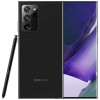 The Samsung Galaxy Note series has always been the smartphone of most professionals, myself included. I was originally connected and haven't been able to walk since then. With Note devices, you feel like you can do whatever matters. And that's the feeling I got again after holding the Samsung Galaxy Note 20 Ultra 5G in my hand. But worth Rs 1 Lakh+ money, is this phone worth it? Read the review for
The Samsung Galaxy Note series has always been the smartphone of most professionals, myself included. I was originally connected and haven't been able to walk since then. With Note devices, you feel like you can do whatever matters. And that's the feeling I got again after holding the Samsung Galaxy Note 20 Ultra 5G in my hand. But worth Rs 1 Lakh+ money, is this phone worth it? Read the review for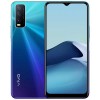 Vivo has recently launched a mid-range segment in August 2020. And It's a Y-series(20) smartphone. Before this Y20,Vivo has already launched a lot of Y series phone at a very affordable price such as Y50, Y11, Y90 etc. This time we are going to see what new or special features Vivo has added. With Vivo Y20, Vivo also has launched another model of Y series that is named Y20i. This two phones
Vivo has recently launched a mid-range segment in August 2020. And It's a Y-series(20) smartphone. Before this Y20,Vivo has already launched a lot of Y series phone at a very affordable price such as Y50, Y11, Y90 etc. This time we are going to see what new or special features Vivo has added. With Vivo Y20, Vivo also has launched another model of Y series that is named Y20i. This two phones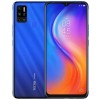 Tecno's popular series of smartphones 'Tecno Spark 6 Air' has been launched in Bangladesh which is a low budget phone. Officially, the sale of the phone has already started in the market. The last few days I have been using this phone. And I have found the similarity of the Tecno Pouvier 4 with the phone in use. The key is to buy the phone that will attract the buyers. But the
Tecno's popular series of smartphones 'Tecno Spark 6 Air' has been launched in Bangladesh which is a low budget phone. Officially, the sale of the phone has already started in the market. The last few days I have been using this phone. And I have found the similarity of the Tecno Pouvier 4 with the phone in use. The key is to buy the phone that will attract the buyers. But the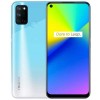 Technological advances are making cell phones smarter every day. But the price went up too! If you want to buy a smartphone at an affordable price with modern features, don't miss to check out the realme 7 series! Recently, Realme has launched a new smartphone in its Realme 7 series - the Realme 7i. The new budget Realme smartphone joins the Realme 7 and the Realme 7 Pro devices that were launched
Technological advances are making cell phones smarter every day. But the price went up too! If you want to buy a smartphone at an affordable price with modern features, don't miss to check out the realme 7 series! Recently, Realme has launched a new smartphone in its Realme 7 series - the Realme 7i. The new budget Realme smartphone joins the Realme 7 and the Realme 7 Pro devices that were launched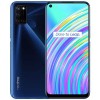 Technological advances are making cell phones smarter every day. But the price went up too! If you want to buy a smartphone at an affordable price with modern features, don't miss the Realme C series! Having opened in the local market in Bangladesh in February 2020 with the launch of realme C2, the pioneering realme brand surprised us with a wide range of high-end phones at a reasonable price range. In this
Technological advances are making cell phones smarter every day. But the price went up too! If you want to buy a smartphone at an affordable price with modern features, don't miss the Realme C series! Having opened in the local market in Bangladesh in February 2020 with the launch of realme C2, the pioneering realme brand surprised us with a wide range of high-end phones at a reasonable price range. In this